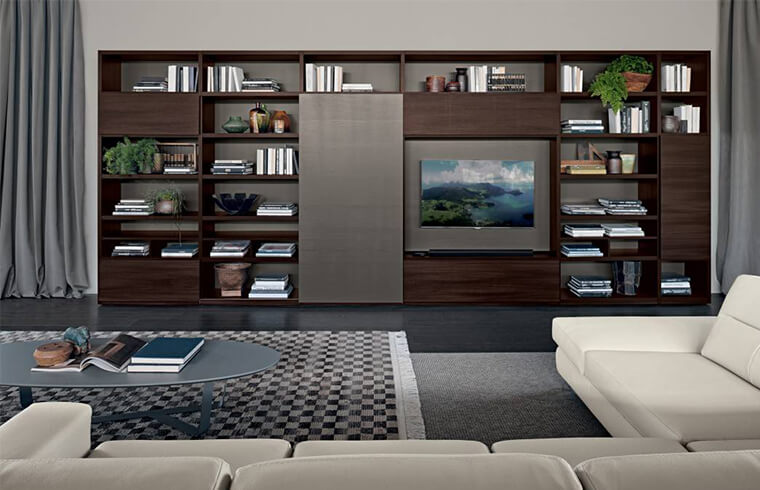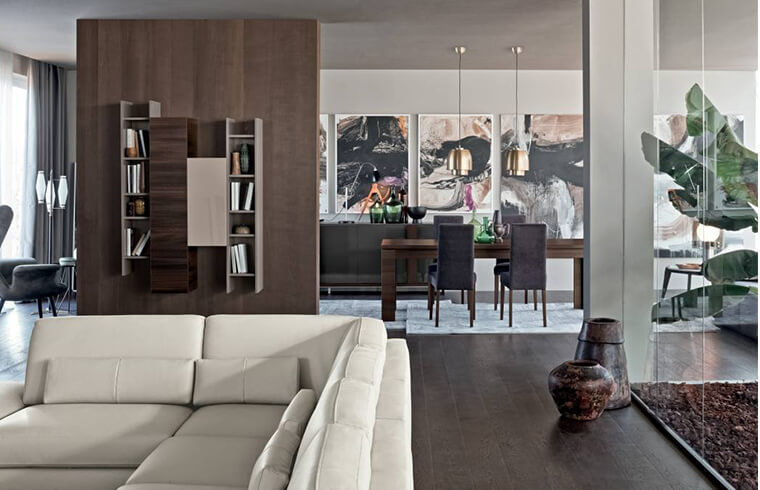Bookcases are an essential piece of furniture for any home, providing not only storage for books but also a place to display decorative items and showcase personal style. The choice of material for bookcases can significantly impact their durability, appearance, and functionality. This article will explore various materials commonly used for bookcases, their advantages and disadvantages, and tips for selecting the best material to suit your needs.
Solid wood is a traditional and popular choice for bookcases due to its strength, durability, and timeless aesthetic. Common types of solid wood used for bookcases include oak, pine, maple, and walnut.
1. Advantages: Solid wood offers natural beauty and can be finished or stained to match various décor styles. It is robust and can support heavy loads without sagging.
2. Disadvantages: Solid wood can be expensive, especially for high-quality hardwoods. It is also susceptible to warping or cracking over time if not properly maintained.
Plywood is made by gluing together multiple layers of thin wood veneers. It is a cost-effective alternative to solid wood, providing good strength and stability.
1. Advantages: Plywood is more affordable than solid wood and is less likely to warp or crack. It is available in various grades and finishes, making it versatile for different applications.
2. Disadvantages: The edges of plywood can be unattractive and may require additional finishing. Lower-quality plywood may have visible knots or voids.

MDF is an engineered wood product made from wood fibers, wax, and resin, pressed together under high pressure. It is commonly used for budget-friendly furniture.
1. Advantages: MDF is smooth, consistent, and easy to paint or laminate. It is relatively inexpensive and available in a variety of finishes.
2. Disadvantages: MDF is not as strong as solid wood or plywood and can sag under heavy weight. It is also more susceptible to moisture damage and may swell or deteriorate if exposed to water.
Particleboard is another engineered wood product made from wood chips, sawdust, and resin, compressed into sheets. It is often used for low-cost furniture.
1. Advantages: Particleboard is very affordable and lightweight. It is often covered with a veneer or laminate to improve its appearance.
2. Disadvantages: Particleboard is the least durable of the wood-based materials and can easily chip or break. It is also highly susceptible to moisture damage.
Metal bookcases offer a modern, industrial look and are known for their strength and durability. Common metals used include steel and aluminum.
1. Advantages: Metal shelves are very strong and can hold heavy loads without sagging. They are also resistant to moisture and pests.
2. Disadvantages: Metal bookcases can be heavy and may require more effort to move. They may also lack the warmth and aesthetic appeal of wood.
Glass shelves provide a sleek, contemporary look and are often used in combination with metal or wood frames.
1. Advantages: Glass shelves are elegant and can make a room feel more open and spacious. They are easy to clean and maintain.
2. Disadvantages: Glass can be fragile and may break under heavy weight. It also requires regular cleaning to keep it free of fingerprints and smudges.
Load-Bearing Capacity
The material chosen should be strong enough to support the weight of books and other items. Solid wood and metal are the best choices for heavy loads, while MDF and particleboard are better suited for lighter items.
Aesthetic Appeal
Consider the overall style of the room and choose a material that complements it. Solid wood and glass offer a classic look, while metal provides a modern, industrial vibe.
Budget
Your budget will play a significant role in the choice of material. Solid wood and metal are generally more expensive, while MDF, particleboard, and plywood are more budget-friendly options.
Maintenance
Different materials require different levels of maintenance. Solid wood needs regular polishing and protection from moisture, while metal and glass are easier to clean but may show fingerprints and dust more readily.
Durability
Durability is crucial, especially for bookcases that will be heavily used. Solid wood and metal offer the highest durability, while MDF and particleboard may need to be replaced sooner.
Environmental Impact
Consider the environmental impact of the materials. Solid wood from sustainable sources and recycled metal are environmentally friendly choices. MDF and particleboard often use recycled wood fibers, but the resins and adhesives used may not be eco-friendly.

Choosing the best material for bookcases involves balancing several factors, including load-bearing capacity, aesthetic appeal, budget, maintenance, durability, and environmental impact. Solid wood and metal are ideal for those seeking strength and longevity, while MDF, particleboard, and plywood offer more affordable options. Glass shelves can add a touch of elegance and modernity to a space.
Ultimately, the best material for your bookcases will depend on your specific needs, preferences, and the intended use of the shelves. By carefully considering these factors, you can select a material that not only meets your functional requirements but also enhances the overall look and feel of your home. Whether you opt for the timeless appeal of solid wood, the modern edge of metal, or the budget-friendly options of MDF and particleboard, well-chosen bookcases can provide both practical storage and aesthetic value for years to come.
We employ cookies to analyze website traffic and enhance your browsing experience. Data securely aggregated, privacy protected. See Privacy Policy for details.